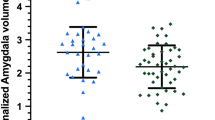Abstract.
Objective:
To examine the relationship between inflammation and brain atrophy in patients with a clinically isolated syndrome (CIS) suggestive of multiple sclerosis (MS).
Methods:
Monthly triple-dose gadolinium (Gd/DTPA)-enhanced MRI scans over 6 months were obtained in 62 consecutive CIS patients with an abnormal baseline MRI scan. Subsequently MRI was performed at months 12 and 18. Patients who developed a clinically definite MS (i. e., a second clinical episode) ended the study at the time of the relapse. For each scan, the number and volume of newly active lesions (Gd-enhancement/new or newly enlarging T2 lesion that did not enhance), and the number and volume of T2 hyperintense lesions (T2-LL) and T1-black holes (T1- LL) were calculated. The percentage of brain volume changes (PBVC) was assessed using a fully automated technique (SIENA; Structural Image Evaluation using Normalization of Atrophy).
Results:
Twenty-four (39%) developed clinically definite MS by month 18. Thirty-eight (61%) were relapsefree and completed the MRI follow-up. Relapse-free patients showed a progressive median increase between baseline and month 18 in T1-LL (25%, p < 0.001), but not in T2-LL (8.5%, p = ns). PBVC decreased by 1.1% (p < 0.001) in a time-dependent pattern (Kendall coefficient of concordance = 0.85). Exploratory subgroup analyses showed a trend towards progressive decreases in brain volume in active patients (i. e., those with at least one newly active lesion during monthly MRI scanning; Spearman’s R = –0.61; p < 0.001), but not among inactive patients (Spearman’s R = –0.10; p = 0.53). Significant differences in median brain volume changes between the active and inactive patient groups were found at months 12 and 18; the difference detected at month 6 was not significant. The cumulative number and volume of new Gd-enhancing lesions developed during the 6 months of frequent MRI scanning were highly correlated with PBVC over the 18-month period (Spearman R values were 0.73 and 0.85, respectively). The strongest predictor of PBVC at 18 months was the cumulative volume of newly active lesions during frequent MRI scanning [ß = –0. 83, standard error (SE) = 0.07, p < 0.001].
Conclusions:
This study shows that visible inflammation as detected by monthly, triple-dose Gd-enhanced MRI is an important factor in the pathogenesis of brain tissue loss in CIS patients. However, inflammation and brain atrophy do not proceed in parallel: atrophy appeared only after a delay of months following acute inflammation. Frequent MRI scanning allows for the detection of CIS patients who will develop brain atrophy in the short-term.
Similar content being viewed by others
Author information
Authors and Affiliations
Corresponding author
Rights and permissions
About this article
Cite this article
Paolillo, A., Piattella, M.C., Pantano, P. et al. The Relationship between inflammation and atrophy in clinically isolated syndromes suggestive of multiple sclerosis. J Neurol 251, 432–439 (2004). https://doi.org/10.1007/s00415-004-0349-8
Received:
Revised:
Accepted:
Issue Date:
DOI: https://doi.org/10.1007/s00415-004-0349-8




